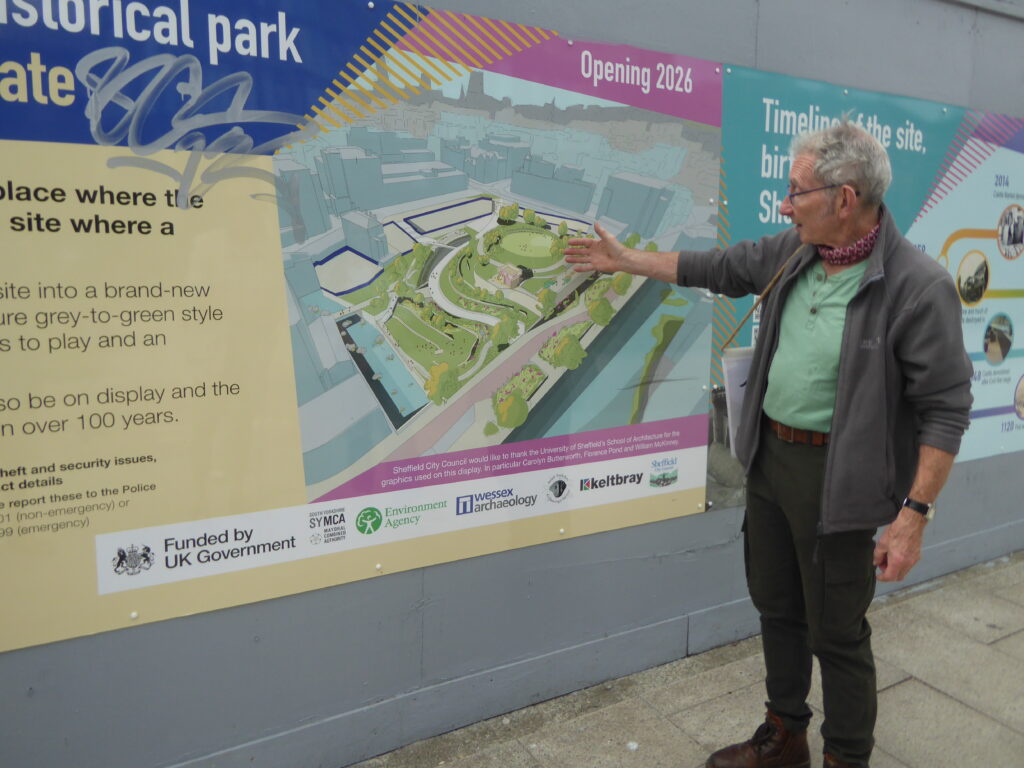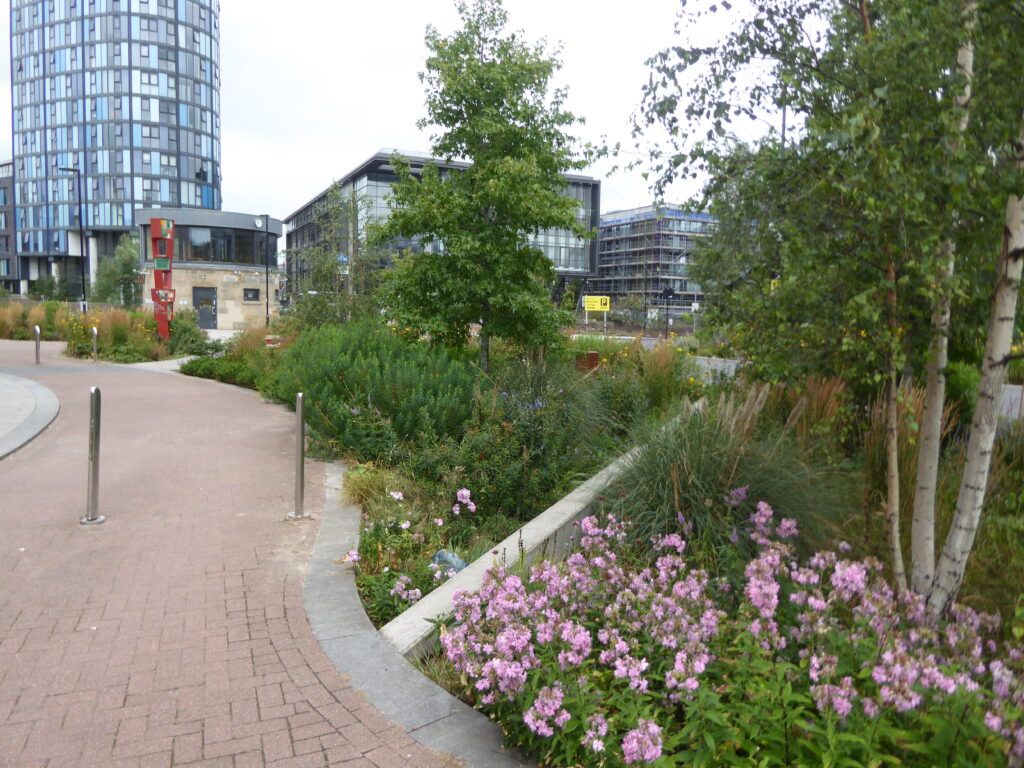
Five intrepid CovSoc members went “river caving” in the fine city of Sheffield last week.
The visit was courtesy of the Sheaf and Porter Rivers Trust. The trust has been set up to promote the daylighting of underground rivers in Sheffield.
Before going underground, we spent the morning looking at the city centre from above.
In particular we visited the site of Sheffield Castle. This site has been revealed following the demolition of the former city market. A new public park is under construction on the site and lots of archaeology is taking place during the redevelopment.
In early days, the juncture of the River Sheaf and the River Don was known as Sheaf Field and was the foundation of the city. The castle was built there by the Normans in the 12th Century. Initially a wooden motte and bailey castle, it was reconstructed in stone in 1270.

Although there is little evidence and no historical images of the castle, there are many stories that have been passed down the ages. Like St. Mary’s Hall in Coventry, Sheffield Castle was one of the locations that Mary Queen of Scots, was held during her confinement in England.
The castle was demolished on Parliament’s orders after the Civil War in 1648. The site was then used as a bowling green and afterwards as an abattoir, but was latterly used as the city’s main indoor market.
The £25 million regeneration scheme is being funded from government Levelling Up funds.
As well as the castle, there were a number of schemes aimed at cleaning up the rivers and preventing flooding. We saw a large scheme, described as the largest Sustainable Drainage Schemes in the country. Not that you would recognise it as such – it just looked like a lovely landscaped area.

Interestingly, the creation of these new environments has supported the establishment of a network of new cycle routes. Cycling in Sheffield is challenging, with so many hills, but the routes following the rivers are more or less level and are therefore very popular.
The whole length of the River Don has now been cleaned up, and the weirs removed or fish ladders installed. This has been so successful that there are now salmon in the Don. This will be amazing for anyone who remembers the river in the 1970s.
In the afternoon we walked along the Porter Brook and then the River Sheaf as far as the so called Megatron, which gives its name to the tour.
Historically the rivers became foul through river side industries dumping their effluent and waste into them. In particular waste from slaughterhouses was just brushed into the river. In the Victorian era they were used as sewers and building over them seemed to be the best thing to do.
The walk involved some very low sections, even crawling in one place. We were very grateful for the helmets and headlamps provided. Although we were clad in wellingtons, none of us got through without water getting into them.

Our tour was guided by trained cavers. It was explained that the river trip was far less hazardous than guided caving tours. It was this revelation that led to the decision to set up the underground tours. The Trust now hosts 2000 tours a year, with a total of 20,000 participants to date. “We haven’t lost anyone yet” said our host, Simon Ogden.

The river showed us its industrial heritage – we were presented with a collection of knives and other objects that had been recovered from the river. While we were watching, our guide found another knife blade that he picked up from the river bed. A full archaeological “dig” in the river was planned, but had to be abandoned due to Covid, and hasn’t yet been undertaken.

As well as opening up the river when the opportunity arises through redevelopment, the Trust is also planning to install “light wells” in suitable locations. The river passes under Platform 5 of the railway station, so there is not going to be redevelopment any time soon. So, the next best thing is to create a light well, about 2 metres square, to let light get down to the river. Scientific evidence shows the benefit of doing this.
There is a strange irony that the Trust campaigns to daylight Sheffield rivers, but is largely funded by its popular guided tours of the underground river. Simon Ogden explained that “The Trust would rather lose its income and see the rivers de-culverted and opened back up to nature and the public alike”.
The benefits of “Daylighting” our rivers are now well established and contribute to the necessity of addressing climate change. In Coventry, our Palmer Lane project, is a start, but we need to do so much more!
We had a fascinating visit to Sheffield and were left with a strong impression of the similarity between Sheffield and Coventry. We both have a lost castle and underground rivers. Our own River Sherbourne passes under our city centre. Is it time to do more to open it to the light?
The participants of our tour all decided to join the Sheaf and Porter Rivers Trust and you can do so here. It only costs £10.
